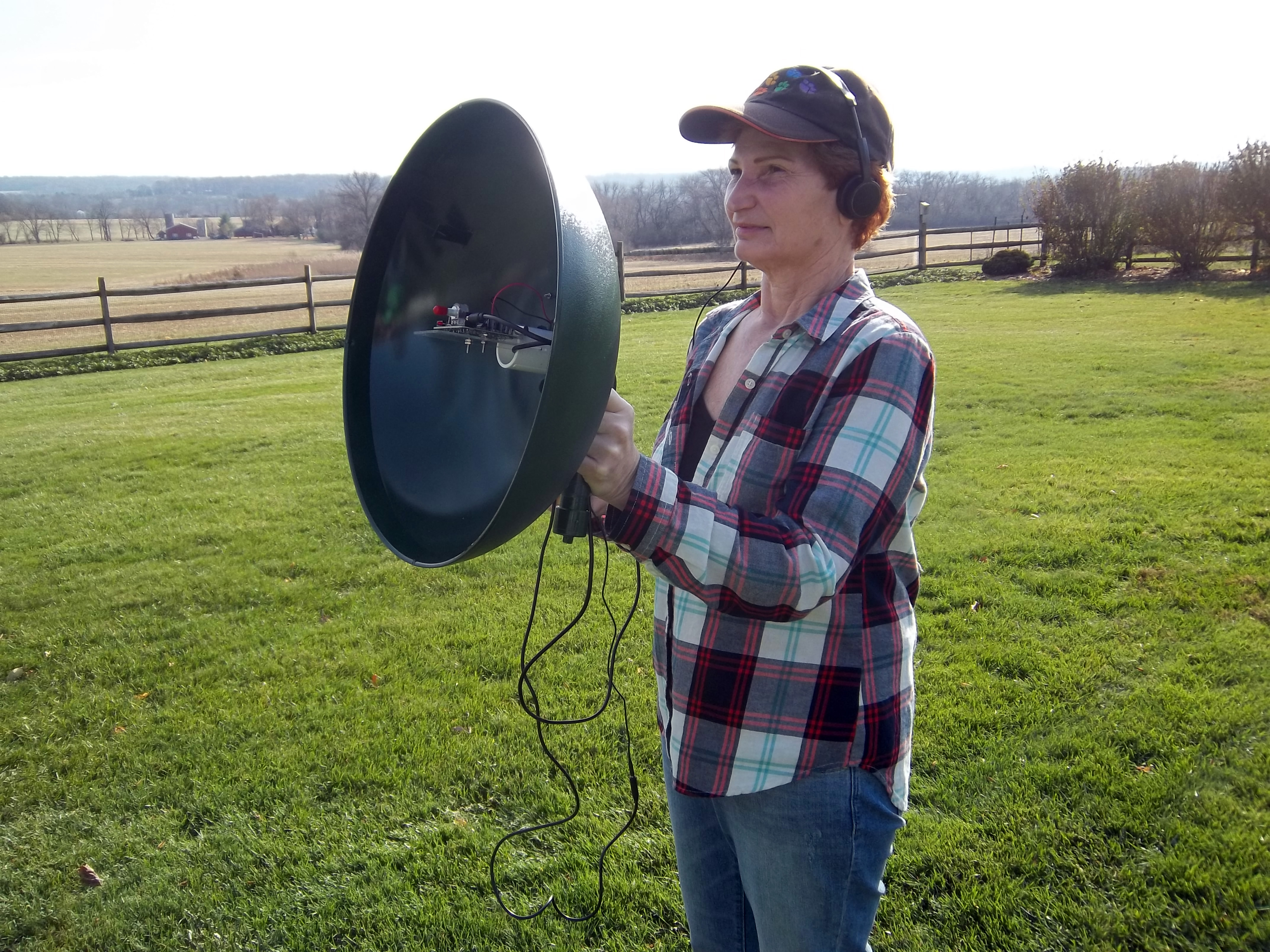If you want to listen to faint sounds far away, you’re going to need a bigger ear. Parabolic microphones gather and focus sound waves the way a satellite dish focuses radio waves, making it possible to listen to the quietest of sounds hundreds of feet away. Parabolic mics are popular with nature lovers for recording birdsongs and other wildlife, and they’re great for eavesdropping on players’ chatter on the sports field. With this project, you can selectively amplify distant sounds and transmit them wirelessly to any FM radio. If you go further and capture the FM signal on your computer, you can even discover characteristics within the noise not possible to hear with unaided ears.
[youtube https://www.youtube.com/watch?v=pOxmdVWbmDE]In addition to building the parabolic dish and PVC handle, you’ll need to assemble a stereo amplification kit, which requires through-hole soldering skill. This kit is not too difficult for beginners. Read the instructions carefully and use plenty of patience as you solder.
Project Origin
So what’s a squirrel baffle? It’s basically a big upside-down bowl that prevents rodents from climbing a pole and stealing food from a bird feeder. Repurposing a squirrel baffle as a parabolic dish is not an original idea. I owe inspiration to a video by Phillip Brummet. (Prior to watching his video, I had tried several different parabolic shapes — from salad bowls to 30″ satellite dishes.)
After testing several microphone options, I found that using a Velleman kit — which included both miniature microphones and an amplifier on a small circuit board — was the most robust and efficient solution.
Additionally, I combed old RadioShack catalog archives and found a “Big Ear” parabolic mic in the 1963 catalog.

Adding a Wireless Transmitter
After building the parabolic dish microphone, my next step was to wirelessly transmit sounds captured by the dish for remote listening. That’s where this design distinguishes itself — it’s unique in that you can monitor sounds from a distance without being tethered to the dish. Instead you can listen in via a simple FM radio (or even several radios). Surprisingly, commercially produced dishes don’t have this feature. The idea of using a wireless transmitter in tandem with a parabolic dish makes a lot of sense — you can tune out unwanted noise, and tune more directly into nature.

Here’s a view from my house deck, facing the Sourland Mountains. After a recent snowfall I used the Squirrel-Baffle Spy Microphone to listen in on geese some distance away, and was even able to hear the sound of snow melting:
Here’s how to build it.





